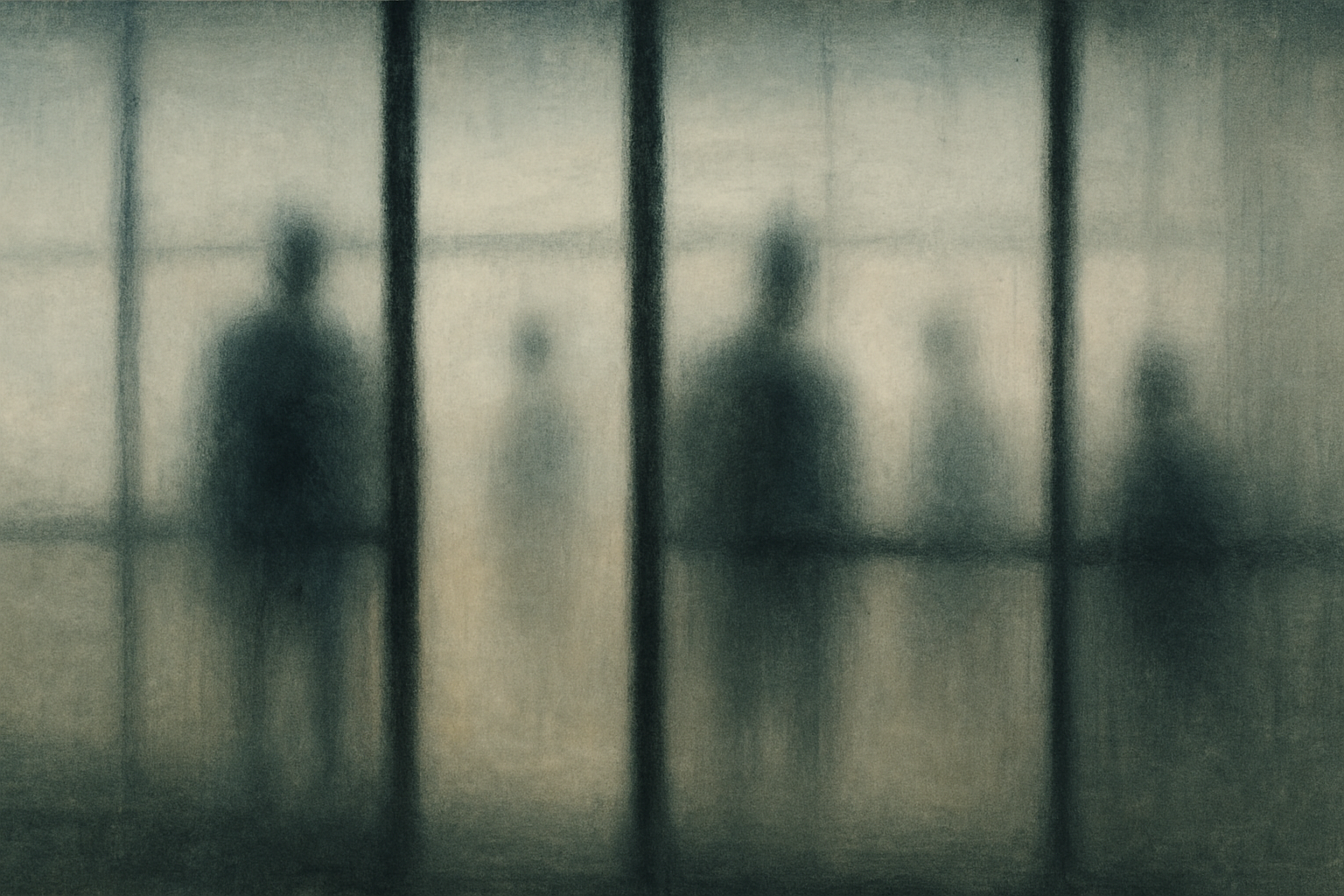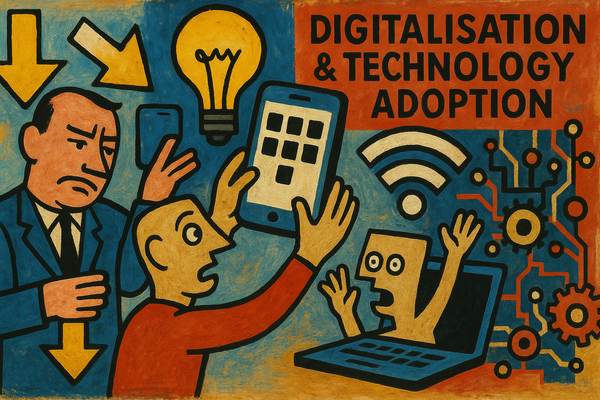When Speaking Up Becomes a Risk: Control, Culture, and the Quieting of Voice in Higher Education
A colleague spoke openly with a senior university leader. Three days later, he was reprimanded. This article explores how a single conversation exposed deeper problems in higher education — from institutional control to selective leadership culture and the quieting of academic voice.

SCENE 1: THE INCIDENT
This account, shared by a colleague in higher education, highlights a moment that reveals deeper issues in the sector.
It began with an open day. These events are shaped by a schedule and a sense of choreography, but they also offer moments of genuine conversation. Staff and senior leaders engage with prospective students, parents, and each other in ways that are more open than in formal committee settings. It was in one of these unscripted moments that a colleague spoke with a very senior university leader. Rather than repeating the expected talking points, he offered his views on strategic matters — not provocatively, but thoughtfully and with conviction.

The exchange was, by his account, encouraging. The senior leader challenged some of what he said, but listened. She expressed appreciation for the discussion. He came away feeling heard, respected, and reassured that there was space for dialogue — that it had been welcome.
Nothing about the exchange suggested confrontation. It reflected the kind of interaction universities often say they value: one based on mutual respect, informed by professional experience, and committed to the institution’s future. In a healthier environment, that would have been the end of the story.
SCENE 2: THE REACTION
Three days later, the tone shifted. The same colleague was called into the Head of Department’s office. He was not thanked for his engagement or invited to reflect on the discussion. He was chastised. The message was clear: speaking off-script to senior leadership was unacceptable. The meeting wasn’t framed as collegial feedback or professional reflection — it was disciplinary in tone and intent.
He learned that the Dean had raised the issue. She had not questioned the content of the conversation but had focused on identifying who had spoken. She was unhappy and wanted names. The concern was not about the accuracy or appropriateness of the points raised but about the fact that they had been raised at all. The concern was that the points raised do not follow her own wishes, the ‘party line’.

This reaction reframed the original exchange. What had seemed like a respectful professional dialogue was now cast as a breach of protocol. The concern was not about accuracy or tone. It was that the views expressed did not align with the Dean’s expectations — voiced in the wrong setting, by the wrong person, without prior clearance. The colleague was not subject to any formal messaging protocol, but the reaction suggested otherwise. The presence of an open forum had not meant openness of content. The institution’s tolerance for voice appeared open. However, within the School and Department to which the staff member belonged, it now appeared clearly conditional — and easily withdrawn.
SCENE 3: A CULTURE OF CONTROL

The reaction did not simply concern an individual incident. It revealed a deeper discomfort with unscripted academic voice. What was framed as a breach of messaging discipline can also be read as a demonstration of institutional fragility — a culture that demands control over who speaks, when, and to whom. Rather than interpreting the exchange as collegial engagement, it was treated as a disruption to a managed narrative.
The Head of Department’s response reinforced this. Instead of mediating, reflecting, or supporting, the meeting served to assert hierarchy. It signalled to the colleague that even respectful dialogue can cross a line if it falls outside established channels. The role of the HoD became not one of guidance but of enforcement. That shift — from academic leadership to line management — reflects a wider trend across the sector.
This pattern is not unique. UK higher education has seen a growing reliance on centralised messaging, senior executive power, and performance management cultures that reduce autonomy. At the same time, there is a visible churn in senior leadership. Vice-chancellors and deans cycle in and out of roles at increasing speed, often amid controversy, low morale, or strategic overreach. In such conditions, criticism becomes harder to absorb. Loyalty is conflated with silence. Strategic alignment becomes less about direction and more about compliance.
What emerges is not a culture of collaboration but of containment. The stated values of openness and engagement, enablement and empowerment, collegiality and curiosity remain in place, but their practice becomes selective. Staff are expected to contribute — but only in ways that do not challenge authority. The exchange that began this story became problematic not because of what was said, but because of what it represented: an academic acting as a peer in a space where they were expected to remain subordinate.
SCENE 4: REWARDING THE WRONG BEHAVIOURS
The handling of this incident reflects the kinds of behaviours universities now appear to reward. Strategic messaging is prioritised over academic independence. Institutional loyalty is measured by the ability to stay silent in public, not by the quality of contribution in private. Those who speak plainly or think aloud outside of sanctioned processes are marked as liabilities rather than assets.
This raises questions about how leadership is selected and sustained. Who is promoted, and on what basis? In a system where career progression often depends on delivering targets, managing risk, and maintaining alignment with institutional messaging, it is unsurprising that leadership culture tends toward defensiveness. Collegiality is invoked, but hierarchy is enacted. When asked to choose between critical dialogue and organisational discipline, leaders often choose the latter.
Promotion practices reinforce this. Those who rise are often those who can navigate policy priorities, budget cycles, and institutional metrics. These are necessary skills, but without grounding in values, academic judgment, and cultural awareness, they produce a form of leadership that governs without listening. The colleague in this story did not violate policy. He violated expectation. And those expectations — that staff should speak only through prescribed formats — are set and upheld by those who have learned how the system works.
This is not about personal failure. It is about structural selection. Institutions that promote those best at maintaining control will, over time, become controlled environments. The cumulative effect is a narrowing of voice, a shrinking of debate, and a culture where the safest route to influence is not to think critically but to align visibly.
SCENE 5: WHEN ACCOUNTABILITY BECOMES IMAGE MANAGEMENT
The context around this event provides further insight into how leadership responses are shaped. A recent anonymous staff survey revealed significant dissatisfaction across the School and department. The results pointed to falling morale and deep concerns about management culture. Yet these results were not discussed transparently, they were not discussed at all. They were instead attributed to local failures — specifically to the Head of Department — and then quietly set aside.
In the same period, a notable percentage of academic staff left the department. Again, the explanation offered from above was narrow: individual managerial failure. This interpretation sidesteps wider questions about culture, workload, and institutional support. It also places the Head of Department in a precarious position — cast as both the source of the problem and the buffer against it. A classic example of ‘hourglass’ management — where pressure moves downward rather than upward, concentrating accountability at the lowest level while shielding senior layers from scrutiny. Fear, in this context, moves downward.
Meanwhile, a stream of internal emails from the Dean offers praise for performance, always copied to senior management. These messages celebrate success, amplify metrics, and frame the school’s image as stable and high-performing. They are selective in focus, controlled in tone, and aimed upwards. To those within the system, the dissonance is evident. But for those at a distance — in central leadership or external offices — the image remains intact.

Whether senior management truly believes this picture or simply benefits from its maintenance is unclear. Either way, the result is a form of plausible deniability. Difficult truths are softened or deferred. As long as the numbers remain acceptable, deeper questions about culture and leadership remain unexplored.
SCENE 6: WHEN AI SEES IT CLEARLY
The incident described here was shared with a colleague in another institution who subsequently shared it with an AI language model. It took only seconds to interpret the institutional dynamics, identify the power imbalance, and describe the cultural signals being sent. The tool had no personal investment, no context beyond what was provided, and no access to internal documents. Yet it recognised the pattern for what it was: a suppression of voice, a reinforcement of hierarchy, and a missed opportunity for collegial leadership.

This prompts an uncomfortable question: if a predictive model trained on patterns of human language can detect what is happening, why can’t institutional leaders? The answer may lie in the incentives that shape behaviour at senior levels. Leaders are often selected for their ability to manage complexity without disrupting the narrative. When criticism arises, even in measured and professional form, it is framed as a threat rather than a contribution.
This is not a case for deferring to AI. It is a reminder that institutional culture is legible. It produces signals. It teaches people, including machines, how to interpret its norms. If an external tool can observe the contradictions between claimed values and actual behaviours, then so too can students, staff, and the public. The model simply holds up a mirror.
What the model saw — and what those inside the system are often discouraged from acknowledging — is a leadership logic that punishes the very qualities universities claim to promote. Academic thinking, openness to dialogue, willingness to question — these are treated as risks unless they occur in tightly managed ways. The model simply made legible what is already observable. That visibility is not the problem. The problem is that recognising it would require institutional leaders to confront a culture they may be sustaining — or benefiting from. What is framed as loyalty may, in practice, be silence, maintained for self-preservation.
SCENE 7: WHAT IS LOST
When institutions discourage open dialogue, they lose more than individual voices. They weaken the conditions that support trust, creativity, and shared purpose. The cost is not immediate, but cumulative. Over time, staff become quieter, not because they have less to say, but because they learn that saying it is not safe. Collegial critique gives way to private frustration. Strategic discussion becomes a performance, not a process.
This affects not only those who speak up, but also those who watch. Each incident of reprimand or public correction signals something to the wider academic body: that leadership is listening selectively, that contribution is conditional, that institutional rhetoric cannot be taken at face value. In such environments, disengagement is not apathy — it is self-protection.
The loss is intellectual as well as cultural. Universities cannot remain sites of critical inquiry if they restrict that inquiry to classroom settings. If academic thinking must be set aside in moments of institutional strategy, then what remains is not higher education but organisational theatre. The distinction between teaching values and enacting them collapses.
The moment described in this narrative was minor in operational terms. But it marked a point of divergence between the institution’s stated commitments and its enacted norms. These moments accumulate. They shape cultures of silence or of openness, depending on how they are handled. In this case, what was lost was not just a conversation — it was an opportunity to model the kind of institution the sector claims to be.
The colleague at the centre of this story did what academics are supposed to do. He thought critically, spoke openly, and engaged with institutional leadership in good faith. He acted professionally, with no intention to undermine or disrupt. That this became grounds for reprimand reveals more about the institution than about the individual.
This could have been handled differently. The Head of Department could have opened a conversation rather than issued a warning. The Dean could have reflected on the exchange rather than demanded identification. Both could have recognised the moment not as a breach but as an opportunity — to hear, to reflect, and to build trust.
Instead, the institution chose control. And in doing so, it offered a clear signal to others: think carefully before you speak, and more carefully still before you speak to power. That signal will be heard, and it will shape the culture long after this incident is forgotten.

What this episode exposes is not simply a failure of judgment, but a deeper problem in how universities understand leadership, communication, and academic contribution. Until institutions learn to value what they say they value — until they can distinguish between dissent and disruption, and respond accordingly — they will continue to undermine the very conditions they rely on to thrive.




